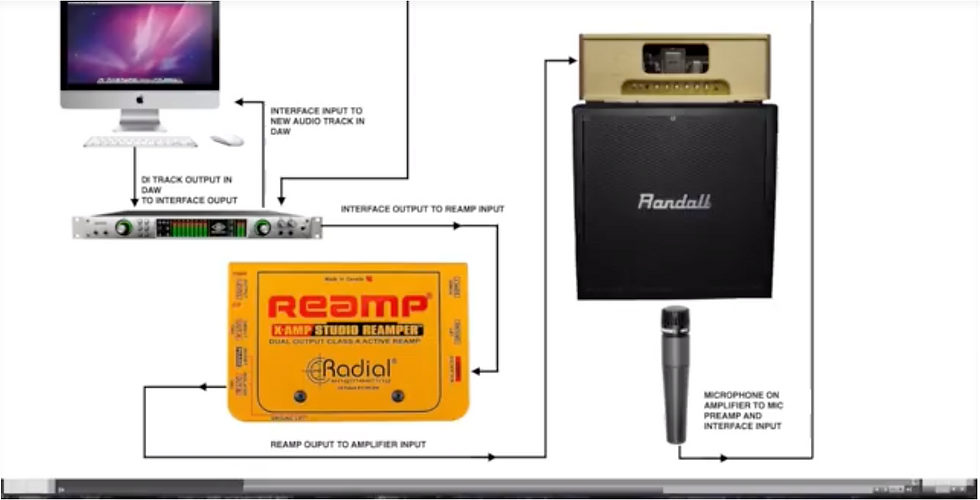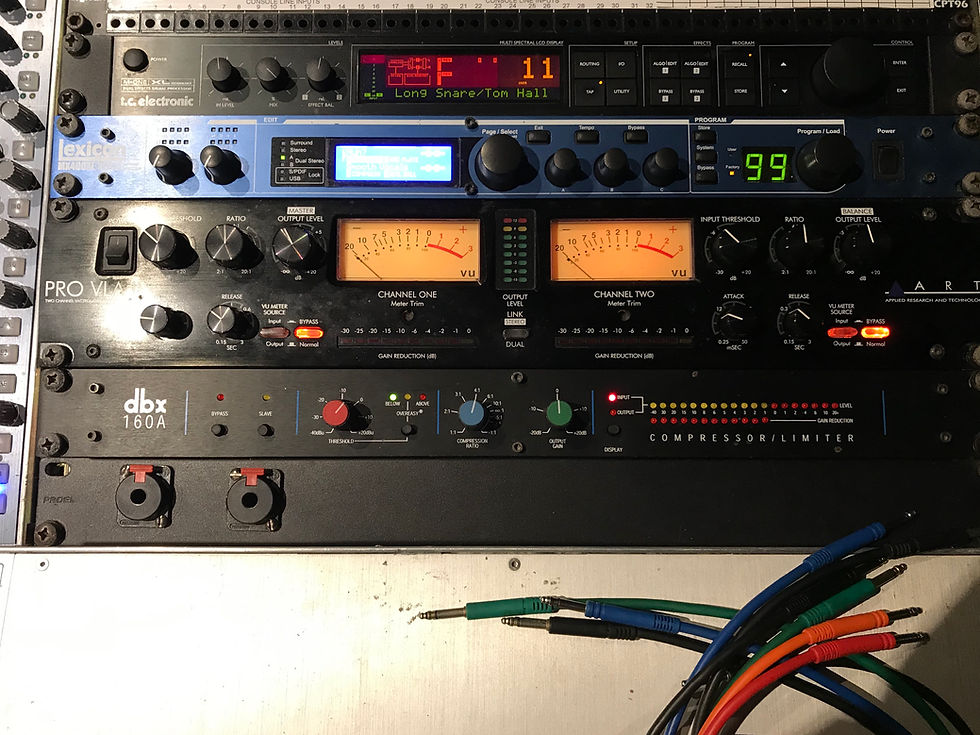A must have skill to create great guitar sound.
- Roy Fry

- Nov 2, 2021
- 2 min read

Re-amping is an easy way to get a great guitar sound without the guitarist (or even another instrument) spending hours trying to find the right sound.
The technique is routing the recorded sound from the DAW back through an amplifier and re-recording the signal back in the DAW.
The most come way in re-amping is to use the clean sound of a good recording. Now you can spend as much time as you want, to finding the right sound you have imagined will work better for the song or project.
How to do the signal-flow for re-amping
Go to the track you want to re-amp in the DAW. Click on the output and use an output channel that is available for you to use.
Grab the appropriate lead that allows you to connect from the output of your interface to the input of the re-amp box.
Use a 1/4 inch lead and plug it into the re-amp box output then plug the other end of the lead into the amplifier you want to use to create a new sound design for your project.
Set up a microphone in front of the amplifier speaker and position the microphone to the speaker sound you are after.
Created a new track and turn on the input button so it lights up green.
Route any input signal that is free for the microphone to use in the new track.
In the new track, arm the recording button by clicking it on, the button should turn to red.
Check your dB level on the righthand side next to the timeline tracker, to check the routing is correct. Now that you have a signal, you are right to record
All About Re-amping Using a Radial Reamp Box in the Studio
Reference
Endless Recording Studios LLC. (2018, March 6). All About Re-amping Using a Radial Reamp Box in the Studio. Retrieved November 17, 2019, from https://youtu.be/1fQIUsV5md8.



Comments